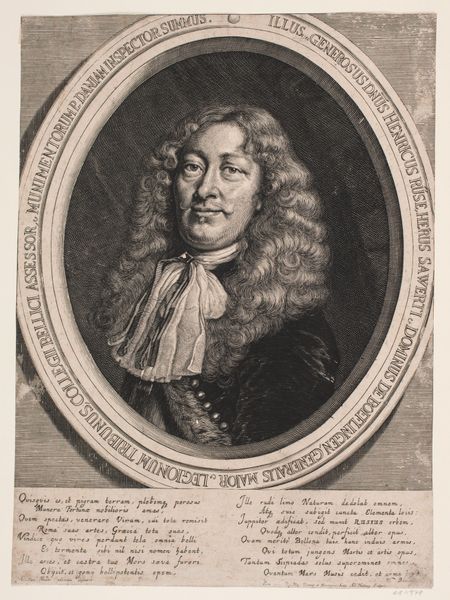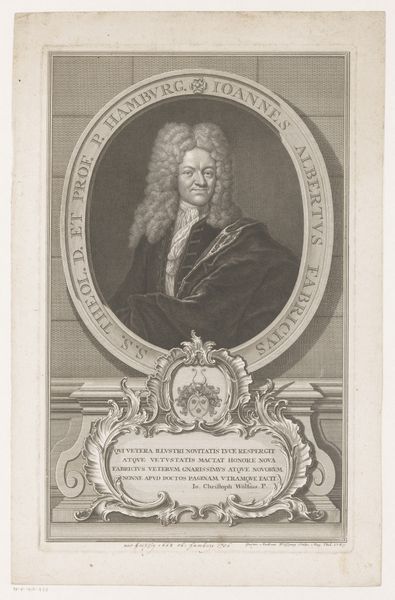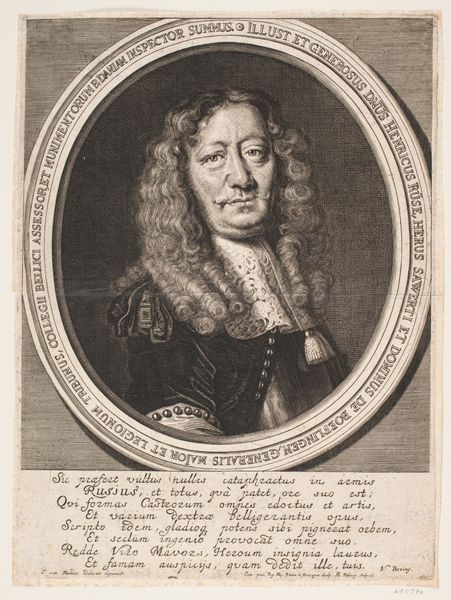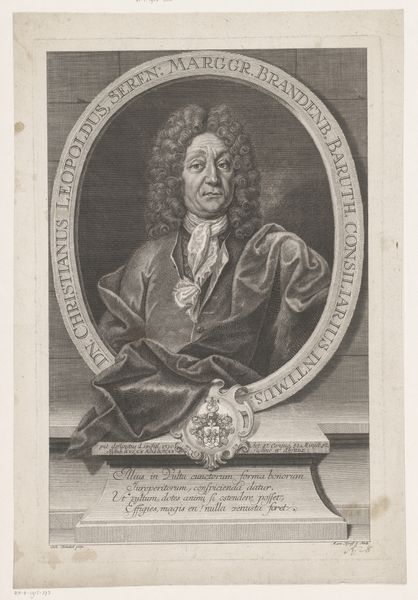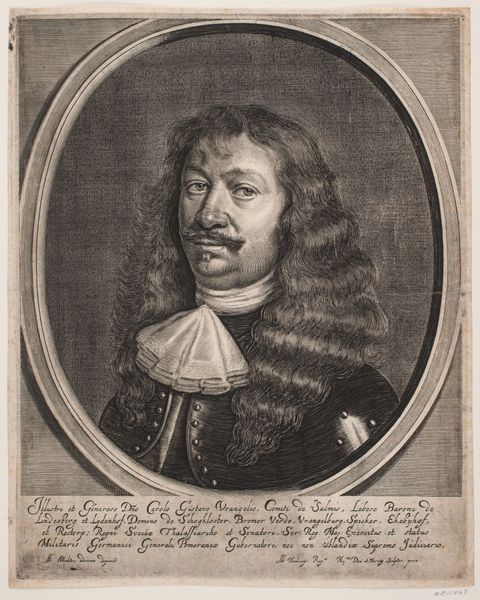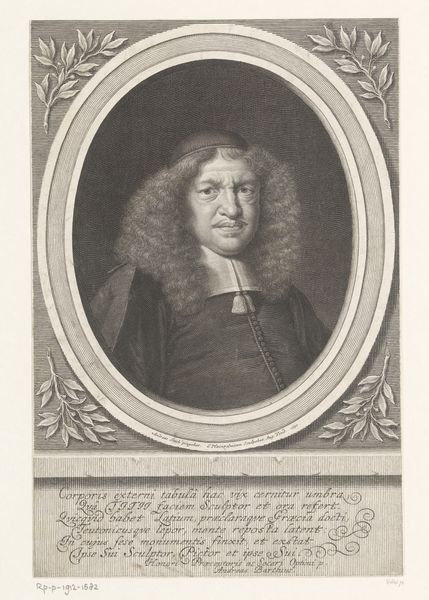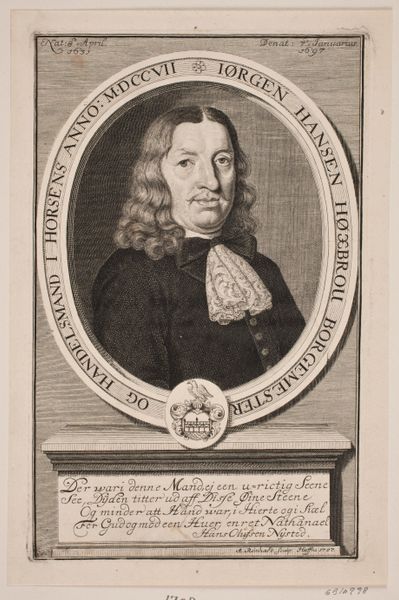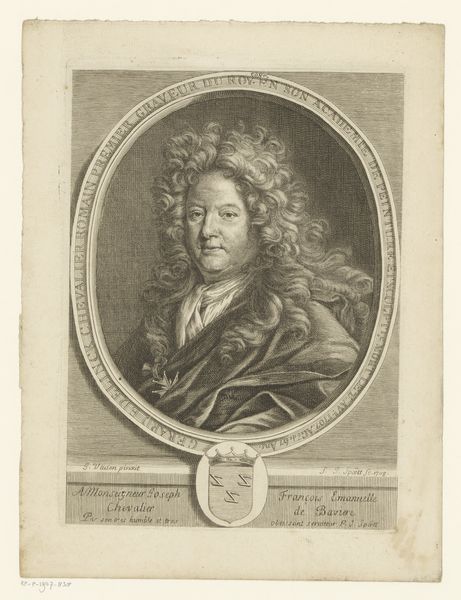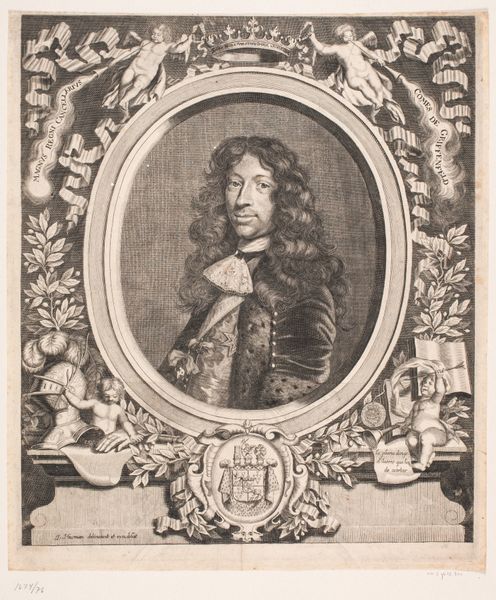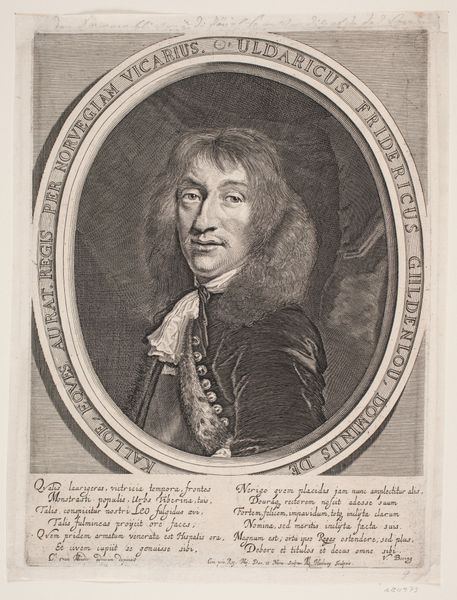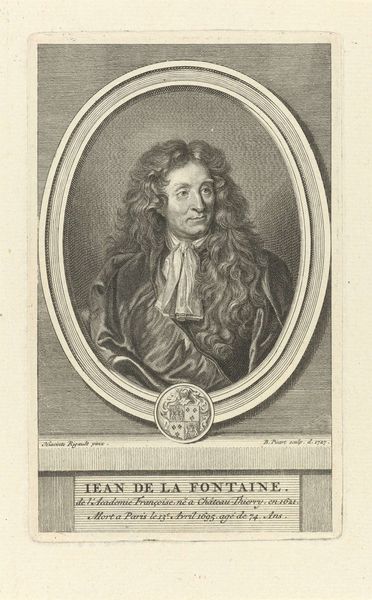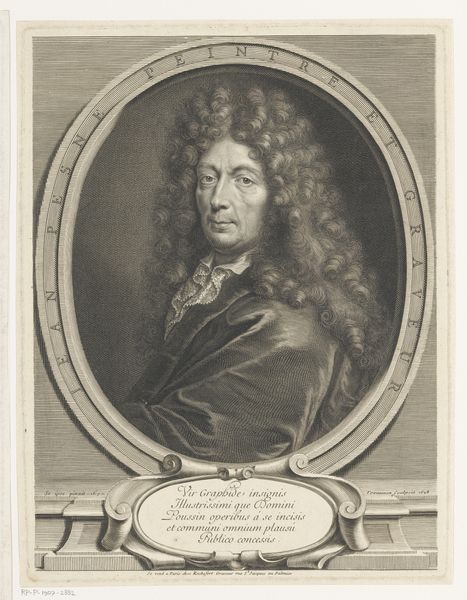
print, typography, engraving
#
portrait
#
baroque
# print
#
old engraving style
#
typography
#
engraving
#
columned text
#
calligraphy
Dimensions: 335 mm (height) x 240 mm (width) (plademaal)
Curator: Before us, we have an engraving titled "Johan Christoph von Körbitz" crafted between 1664 and 1670 by Albert Haelwegh. The artwork, currently housed in SMK—Statens Museum for Kunst, offers a compelling example of Baroque portraiture in print form. Editor: My first impression is... imposing! The sitter's expression, the swirling lines of the engraving—it all lends a gravity, a certain... weightiness to the image. Like peering into the past and feeling its seriousness. Curator: The meticulous detail achieved through engraving contributes significantly to this effect. Note the intricacy of the lines that delineate not just his features but also the textures of his clothing and hair. The lettering is also very important for the composition. Editor: Absolutely. Look at that lace at his throat! Each tiny frill meticulously rendered. It’s amazing how typography almost becomes another element that defines his nobility and elevated rank. Gives me a sense of the sitter’s self-importance and also reminds us of the function of this image within that time period. Curator: The use of oval frame containing the portrait emphasizes a formal separation and elevates him into an esteemed sphere. Note the detailed calligraphy, almost hidden on the bottom, a classic Baroque element to reinforce status, honor, and genealogy. The lines and letters convey symbolic and societal nuances through its artistic qualities. Editor: Exactly! It’s more than just a pretty picture. There’s this performative aspect to it, wouldn’t you say? An individual wanting to establish his existence, but in the most artistic and elaborate manner. Curator: The columned text adds another layer. The deliberate layout serves both an aesthetic and an informative function, embedding meaning and reinforcing the subject's identity through textual embellishments. The lines have an inherent weight; one gets a strong sense of what it might mean for posterity to reflect this person in this specific aesthetic way. Editor: Reflecting on it all now, the image strikes me as a study in controlled presentation. A reminder of how portraits were—and perhaps still are—instruments for crafting and perpetuating an ideal image. Curator: I concur. The synthesis of meticulous engraving and stylized Baroque aesthetics constructs a powerful, enduring representation.
Comments
No comments
Be the first to comment and join the conversation on the ultimate creative platform.
